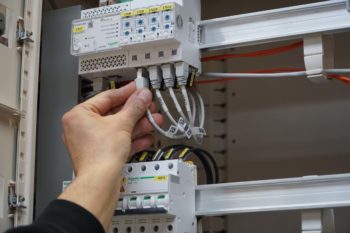Do you have a question?
If it is about control panels, we have the answer.
Technicians and IT staff go in through separate doors (Pfizer)
For a little while at the end of 2020, the eyes of the entire world were on Puurs. Journalists from across the globe gathered at the gates of pharmaceutical giant Pfizer, because somewhere behind those gates, the first vaccine against COVID-19 was rolling off the production lines. Our panels played a major supporting role in this world first, with strictly separate roles for power and data components on the panels themselves.
We had already worked on the Pfizer site in Puurs with different installers as part of various different projects. On this occasion, we did so in relation to the COVID-19 vaccines the pharmaceutical company was developing. To guarantee the effectiveness of these vaccines, it is important that they are stored at the right temperature. Cooling installations are required to do exactly that, and we engineered and built the power panels that powered these installations.
Working under voltage
“The panels consist of two inputs of 1,600 A each, with each part serving as a backup for the other, via a coupling switch. We chose Prisma Safety for this project. This Schneider system offers one huge benefit: maintenance works and expansions can be carried out while the system is live. Whether you need to perform maintenance on a certain functional unit or replace a breaker, the rest of the cabinet can always remain live, meaning no major shutdown is required.” “These panels are smart too: Pfizer can read all data remotely. Why did this breaker trip? How many kilowatts is that process using? Smart panels are increasingly becoming the standard option. Just about anything is possible if you have the right components. In my experience, the main thing the industry is currently interested in is energy monitoring.”
“One interesting thing on this project is that Pfizer asked us to keep the smart components separate from all components to do with power. Usually, we would combine these components. On this project, we brought together the power components at the front of the cabinet, and we moved everything to do with communication and data to the rear. Both of these separate areas were given their own doors, so they can be accessed separately. That way, Pfizer has prevented all possible risk of their IT specialists coming into contact with the electrical components, as they run at currents of 800 A. That section of the system has been fully shielded, and the benefit for Pfizer’s technicians is that they can access all power elements in a single place.”


